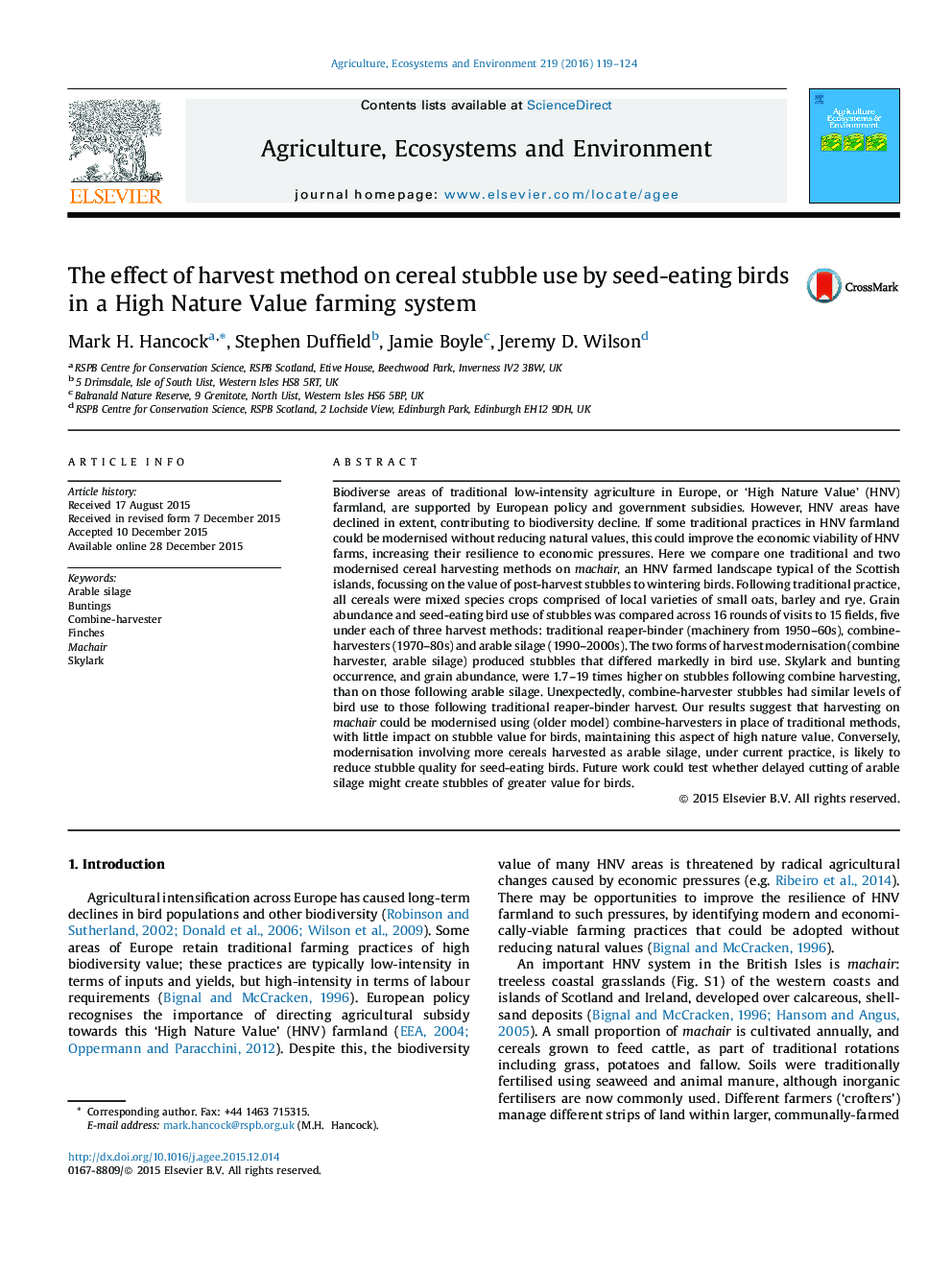| Article ID | Journal | Published Year | Pages | File Type |
|---|---|---|---|---|
| 8487523 | Agriculture, Ecosystems & Environment | 2016 | 6 Pages |
Abstract
Biodiverse areas of traditional low-intensity agriculture in Europe, or 'High Nature Value' (HNV) farmland, are supported by European policy and government subsidies. However, HNV areas have declined in extent, contributing to biodiversity decline. If some traditional practices in HNV farmland could be modernised without reducing natural values, this could improve the economic viability of HNV farms, increasing their resilience to economic pressures. Here we compare one traditional and two modernised cereal harvesting methods on machair, an HNV farmed landscape typical of the Scottish islands, focussing on the value of post-harvest stubbles to wintering birds. Following traditional practice, all cereals were mixed species crops comprised of local varieties of small oats, barley and rye. Grain abundance and seed-eating bird use of stubbles was compared across 16 rounds of visits to 15 fields, five under each of three harvest methods: traditional reaper-binder (machinery from 1950-60s), combine-harvesters (1970-80s) and arable silage (1990-2000s). The two forms of harvest modernisation (combine harvester, arable silage) produced stubbles that differed markedly in bird use. Skylark and bunting occurrence, and grain abundance, were 1.7-19 times higher on stubbles following combine harvesting, than on those following arable silage. Unexpectedly, combine-harvester stubbles had similar levels of bird use to those following traditional reaper-binder harvest. Our results suggest that harvesting on machair could be modernised using (older model) combine-harvesters in place of traditional methods, with little impact on stubble value for birds, maintaining this aspect of high nature value. Conversely, modernisation involving more cereals harvested as arable silage, under current practice, is likely to reduce stubble quality for seed-eating birds. Future work could test whether delayed cutting of arable silage might create stubbles of greater value for birds.
Related Topics
Life Sciences
Agricultural and Biological Sciences
Agronomy and Crop Science
Authors
Mark H. Hancock, Stephen Duffield, Jamie Boyle, Jeremy D. Wilson,
